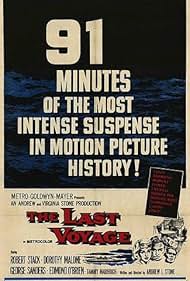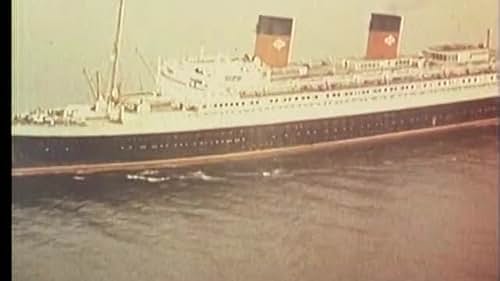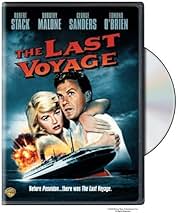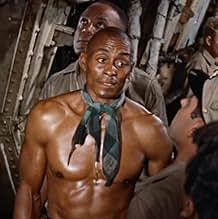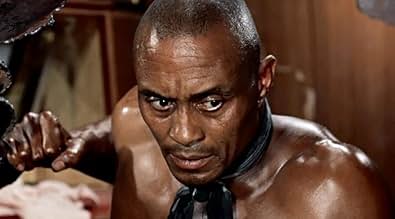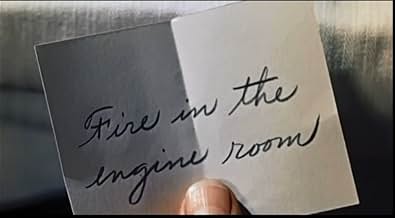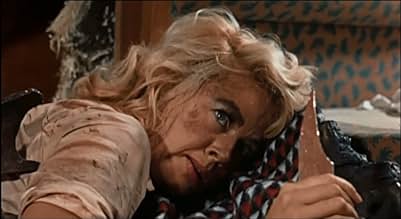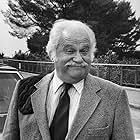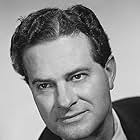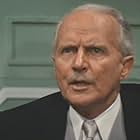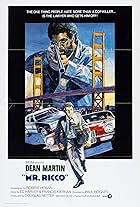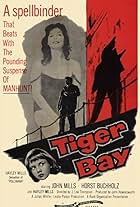IMDb RATING
6.7/10
2.5K
YOUR RATING
After a boiler explosion aboard an aging ocean liner, a man struggles to free his injured wife from the wreckage of their cabin and ensure the safety of their four-year-old daughter as the s... Read allAfter a boiler explosion aboard an aging ocean liner, a man struggles to free his injured wife from the wreckage of their cabin and ensure the safety of their four-year-old daughter as the ship begins to sink.After a boiler explosion aboard an aging ocean liner, a man struggles to free his injured wife from the wreckage of their cabin and ensure the safety of their four-year-old daughter as the ship begins to sink.
- Nominated for 1 Oscar
- 2 nominations total
Heinz Bodmer
- Ship's crew member
- (uncredited)
- Director
- Writer
- All cast & crew
- Production, box office & more at IMDbPro
Storyline
Did you know
- TriviaAccording to maritime historian William J. Miller, the famed French Line was so horrified that its former flagship would be used in such a way that it demanded that the Ile de France's name be removed from her bow and that in no way would any references be made to them.
- GoofsWhen the Captain finally gives the order to send an SOS, the radio operator says the wrong name of the ship twice.
- Quotes
[Last line]
Cliff Henderson: This is one guy I'm gonna help aboard personally!
- ConnectionsEdited into Death Ship (1980)
Featured review
There's a part of me that says that if you want to watch a movie about the dramatic sinking of an ocean liner and the fate of its passengers you could just watch any of the several versions of the Titanic story - some of which were already out in 1960 when "The Last Voyage" was made. They, while heavily dramatized, do have the advantage of being based on a real incident. But there was no "SS Claridon" (although some say that some aspects of this film were loosely based on the sinking of the SS Andrea Doria a few years earlier.) Without the factual basis, this movie depends on the story itself, and as it turns out the story is pretty good and becomes increasingly tense as it reaches its last 15-20 minutes.
The movie opens with a fire in the ship's engine room. So we get right into the drama; there's no build up and no time spent introducing the characters. That initial fire is the beginning of a series of problems that make it clear that the Claridon is doomed; there's no hope of saving it. You might wonder - if things are made clear that early - where the movie is going to go, and I admit that for the first bit I was wondering this myself. But the writers made a very good decision: rather than giving us a huge collection of revolving stories we basically were given just one - a woman (Dorothy Malone) who's pinned in her cabin by debris after the explosions on board and who can't get free, and her husband (Robert Stack) who's desperately trying to save her as the water rises all around her. Throw in their daughter (played by an 8 year old Tammy Marihugh - who I thought was going to turn out to be an irritating child actor but who actually ended up putting on a pretty believable performance as the terrified child) and you have a series of sympathetic characters to root for, and you do empathize with their increasing desperation as things become more and more hopeless. You also have some tension in the crew that serves as a sort of backdrop, as the captain (George Sanders) seems reluctant to do very much at first, being more concerned with the ship (and a pending promotion) than with his passengers. I thought the performances were good all around. The special effects were also well done (the movie was nominated for a special effects Oscar) and even though this was made in 1960, this doesn't really have a dated feeling at all - although the very last scene showing the Claridon going under looked completely fake. One weakness throughout I thought was the repeated use of narration by George Furness (who also played one of the ship's officers who disagreed with the captain's handling of the unfolding disaster.) While it sped the movie along by recounting in a few seconds what might have taken several scenes to establish it just didn't seem to fit with the dramatic feel of the movie.
This was clearly an early entry in what would become a familiar genre in the 1970's: the disaster flick. Compared to most of those films this one stands up very well. It's better than anything in the "Airport" series and although I liked "The Poseidon Adventure" it avoids becoming gimmicky (in the way that the capsized ship was a gimmick in that movie.) Anyone who became a fan of those later disaster movies really should give this one a chance. (7/10)
The movie opens with a fire in the ship's engine room. So we get right into the drama; there's no build up and no time spent introducing the characters. That initial fire is the beginning of a series of problems that make it clear that the Claridon is doomed; there's no hope of saving it. You might wonder - if things are made clear that early - where the movie is going to go, and I admit that for the first bit I was wondering this myself. But the writers made a very good decision: rather than giving us a huge collection of revolving stories we basically were given just one - a woman (Dorothy Malone) who's pinned in her cabin by debris after the explosions on board and who can't get free, and her husband (Robert Stack) who's desperately trying to save her as the water rises all around her. Throw in their daughter (played by an 8 year old Tammy Marihugh - who I thought was going to turn out to be an irritating child actor but who actually ended up putting on a pretty believable performance as the terrified child) and you have a series of sympathetic characters to root for, and you do empathize with their increasing desperation as things become more and more hopeless. You also have some tension in the crew that serves as a sort of backdrop, as the captain (George Sanders) seems reluctant to do very much at first, being more concerned with the ship (and a pending promotion) than with his passengers. I thought the performances were good all around. The special effects were also well done (the movie was nominated for a special effects Oscar) and even though this was made in 1960, this doesn't really have a dated feeling at all - although the very last scene showing the Claridon going under looked completely fake. One weakness throughout I thought was the repeated use of narration by George Furness (who also played one of the ship's officers who disagreed with the captain's handling of the unfolding disaster.) While it sped the movie along by recounting in a few seconds what might have taken several scenes to establish it just didn't seem to fit with the dramatic feel of the movie.
This was clearly an early entry in what would become a familiar genre in the 1970's: the disaster flick. Compared to most of those films this one stands up very well. It's better than anything in the "Airport" series and although I liked "The Poseidon Adventure" it avoids becoming gimmicky (in the way that the capsized ship was a gimmick in that movie.) Anyone who became a fan of those later disaster movies really should give this one a chance. (7/10)
Details
Box office
- Budget
- $1,370,000 (estimated)
- Runtime1 hour 31 minutes
- Aspect ratio
- 1.37 : 1(original ratio)
- 1.85 : 1
Contribute to this page
Suggest an edit or add missing content

